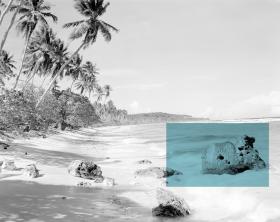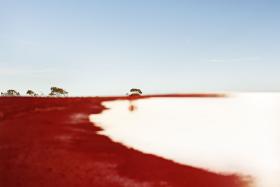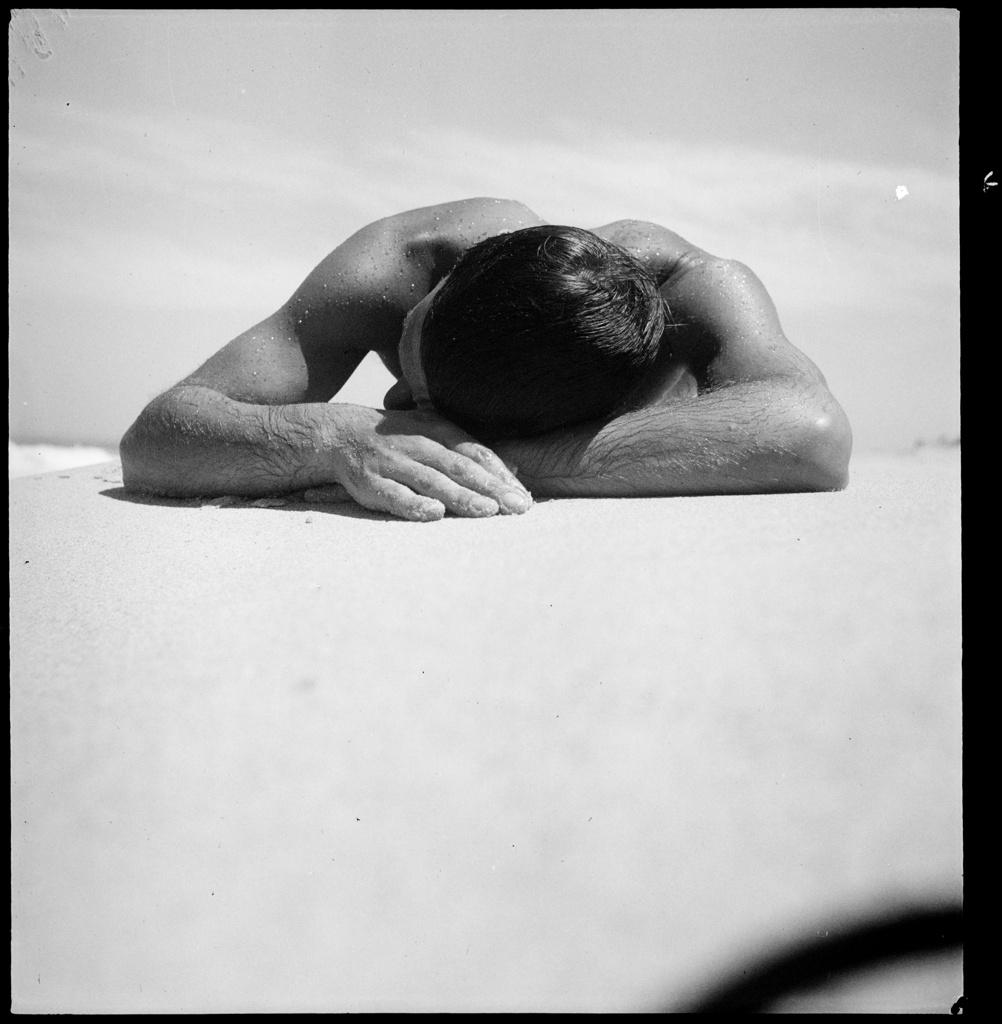Taken around 1937 by revered photographer Max Dupain (1911–1992), the Sunbaker entered Australia’s consciousness in the mid-1970s to rapidly become a symbol of the country’s identity and way of life. It was a time when photography was beginning to be recognised as an art form, and the ‘new nationalism’ was stimulating ‘self-confidence, maturity, originality and independence of mind’, to quote a 1973 speech by Prime Minister Gough Whitlam in Ballarat. The purity of the form and the intensity of the subject matter in this photograph were an ideal trigger for imagination, admiration and identification.
History would prove that the Sunbaker was not just the ‘simple affair’ that the photographer described when asked about the notoriety of the image. The photograph of Harold Salvage, a British builder who was part of a group of friends on a surfing trip, has indeed been described as ‘perhaps the most famous and admired photograph in Australia’ (The Age, 13 December 2004) and ‘probably the most widely recognised Australian photograph’ (Highlights, Monash Gallery of Art, 2010).
The image did not appear until Max Dupain’s first monograph was published in 1948. The negative was then lost and, in the 1970s, another version was printed for the first time. Not widely known, the Sunbaker gained fame when it was used as the poster for the opening exhibition of the Australian Centre for Photography in 1975. Over the years its ongoing resonance through numerous publications, exhibitions, examinations and reinterpretations has elevated the image to iconic status.
Almost 80 years on, the Australian Centre for Photography has commissioned 15 Australian artists to create new work in response to the Sunbaker.



Taking Dupain’s image and the medium of photography as a starting point, Under the sun also incorporates sculpture, video and installation-based works. In the Library’s galleries, a bronze sculpture converses with Sufi dancers, black-and-white diagrams of the solar system bear witness to Australian colonial history, while colourful landscape photographs draw attention to invisible traces that tell the dramatic story of our land.
From Bondi Beach to Nauru, Under the sun reveals the complexities of an image that still inspires controversy and challenges simplistic perceptions of our culture and identity.
Claire Monneraye
Curator, Australian Centre for Photography

